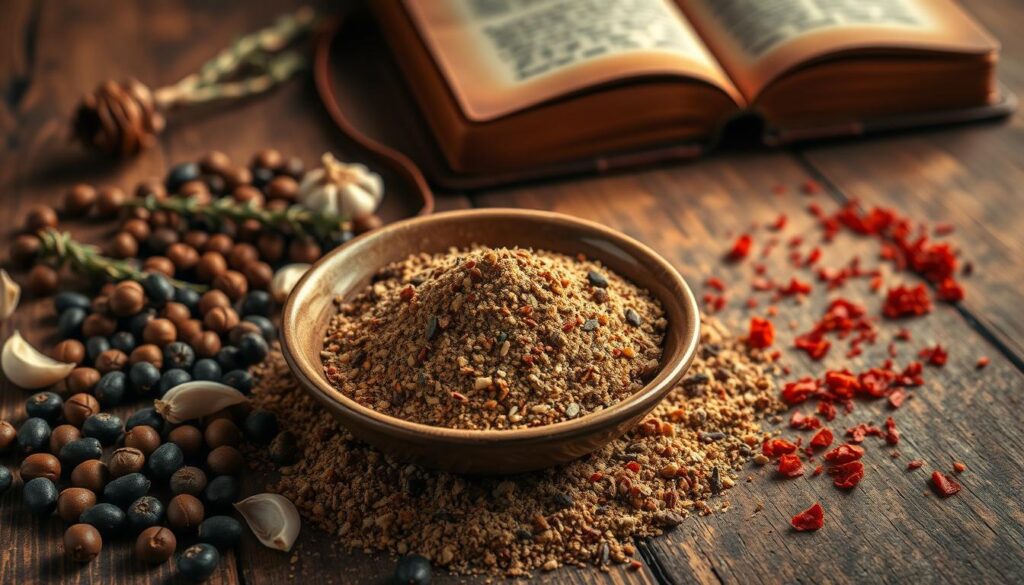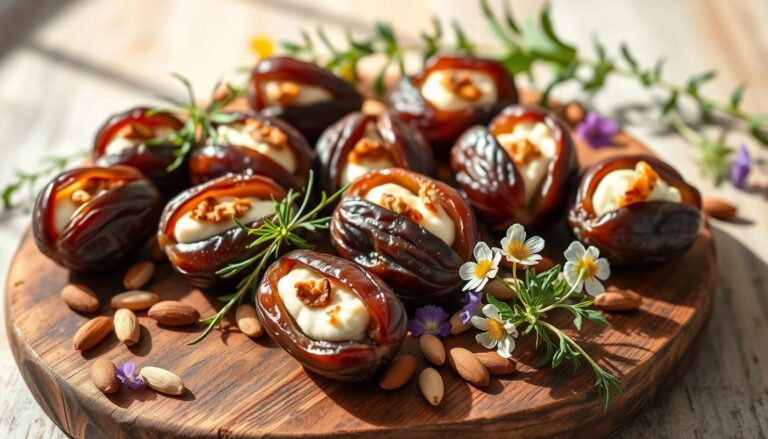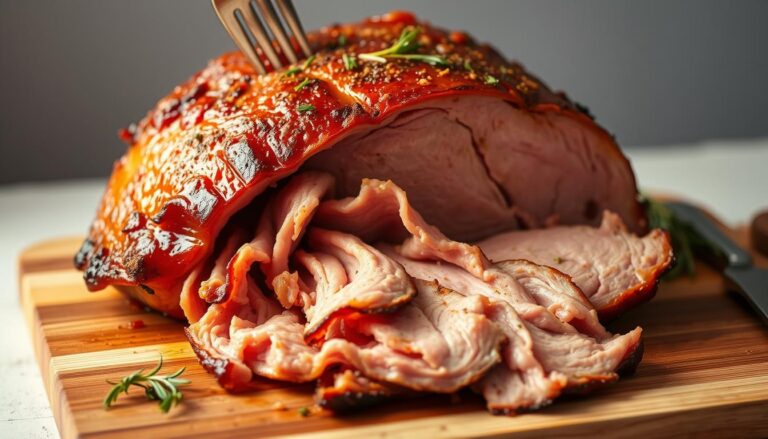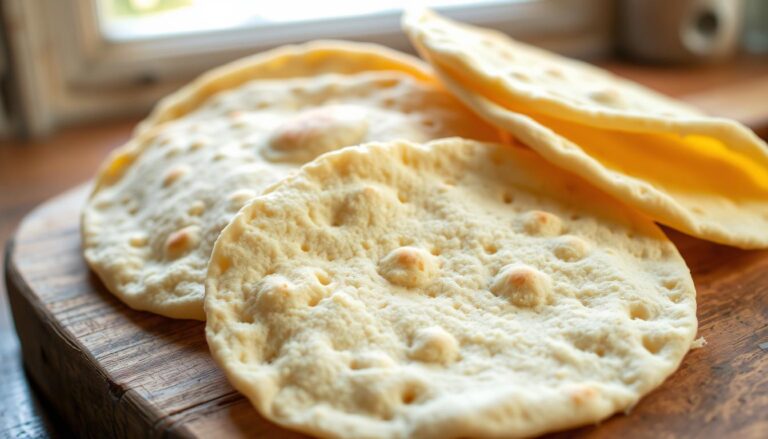The Best Deer Sausage Recipe for Flavorful Homemade Meals
Every hunting season, I remember my grandfather’s workshop. It was where wild game turned into tasty meals. The smell of spices and fresh venison filled the air, making lasting memories.
Making your own deer sausage is more than just cooking. It’s about keeping a tradition that connects us to our heritage and the land. It’s a way to honor our roots.
Crafting homemade deer sausage recipe is an art. It turns tough meat into delicious treats. With this recipe, you can make sausages as good as those in restaurants. It’s perfect for hunters and anyone who loves trying new foods.
It will make you a better cook and impress your loved ones. Making homemade deer sausage is a skill that will impress everyone.
Table of Contents
Key Takeaways
- Homemade deer sausage offers complete control over ingredients and flavors
- Learn to transform tough venison cuts into delicious sausages
- Discover traditional and creative seasoning techniques
- Understand the importance of meat-to-fat ratio
- Master sausage-making techniques for professional results
Understanding the Basics of Deer Sausage Making
Starting your journey in making homemade venison sausage can boost your cooking skills. It lets you create a tasty, custom meat product. Learning to make deer sausage is a fun mix of old cooking ways and new flavor ideas.
Benefits of Making Homemade Venison Sausage
Homemade venison sausage has many perks over store-bought. You get to:
- Choose the best ingredients
- Control the flavors
- Pick where the meat comes from
- Make it healthier
Essential Equipment and Tools
To make great deer sausage, you need the right tools. Your kitchen should have:
- A meat grinder
- A sausage stuffer
- Sharp knives
- Cutting boards
- A meat thermometer
Choosing the Right Meat Ratio
The key to a great venison sausage is the meat ratio. Experts say use 80% lean game meat and 20% pork fat. This mix keeps your sausage moist and full of flavor.
Getting good at making deer sausage takes time and effort. But with each try, you’ll get better and enjoy every bite.
Selecting and Preparing Your Venison
Making the perfect deer sausage starts with picking top-notch venison. The secret to a great venison sausage is choosing the right cuts and preparing them carefully.
For your sausage, pick lean cuts from the hindquarters or shoulder. These areas have the best meat for grinding and taste. Make sure to remove all silver skin and extra connective tissue for a smooth sausage texture.
- Choose fresh, clean venison from young deer
- Trim away all visible fat and connective tissue
- Cut meat into 1-inch cubes for easier grinding
Temperature is key in your venison sausage recipe. Keep your meat extremely cold during preparation. Butchers say to partially freeze the meat until it’s almost solid but still easy to handle. This stops bacteria from growing and keeps the meat’s texture during grinding.
| Venison Cut | Suitability for Sausage | Recommended Preparation |
|---|---|---|
| Hindquarters | Excellent | Remove silver skin, cube into 1-inch pieces |
| Shoulder | Very Good | Trim excess fat, cut into small cubes |
| Backstrap | Good | Best for leaner sausage variations |
Professional tip: Work fast and keep your cutting board and tools ice-cold. This stops the meat from getting warm and growing harmful bacteria. Paying close attention to detail in preparation will make your homemade venison sausage better.
The Perfect Meat-to-Fat Ratio for Deer Sausage Recipe
To make the best deer sausage, you need to get the meat and fat mix just right. This balance is key for great taste and texture in your homemade sausage.
When making deer sausage, the meat-to-fat ratio is very important. Lean game meat needs fat to stay moist and taste better.
Understanding the 80/20 Rule
The 80/20 rule is the best ratio for deer sausage:
- 80% lean venison meat
- 20% fat (usually pork fatback)
Why Pork Fat is Essential
Pork fat is crucial for your deer sausage:
- It adds moisture
- It boosts flavor
- It keeps the sausage from drying out
- It helps the ingredients stick together
| Meat Type | Fat Percentage | Sausage Texture |
|---|---|---|
| Pure Venison | 0-5% | Very Dry |
| Venison + Pork Fat | 20% | Moist and Flavorful |
Temperature Control Tips
Keeping the right temperature is key when making deer sausage. Make sure everything is cold to avoid greasy sausage.
- Chill meat to 32-40°F before grinding
- Use cold mixing bowls
- Work quickly to prevent fat melting
By sticking to these tips, you’ll make a tasty and well-textured deer sausage.
Essential Ingredients and Seasonings

Making the perfect deer sausage starts with the right seasonings. Your deer sausage seasoning can turn ordinary venison into a dish that excites your taste buds and leaves a lasting impression.
For a spicy deer sausage recipe, aim for a balanced flavor. It’s important to know how spices work with venison’s lean meat.
- Salt: The foundational seasoning that enhances meat flavor
- Black pepper: Adds warmth and depth
- Garlic powder: Provides aromatic complexity
- Red pepper flakes: Introduces heat for a spicy kick
- Paprika: Contributes color and mild sweetness
Professional sausage makers use special spice mixes to improve their venison sausage. The right deer sausage seasoning can turn a good sausage into an amazing one.
| Seasoning Category | Key Ingredients | Flavor Profile |
|---|---|---|
| Classic Blend | Salt, pepper, garlic, sage | Traditional, savory |
| Spicy Blend | Cayenne, chili powder, red pepper flakes | Hot and intense |
| Herb-Infused Blend | Thyme, rosemary, marjoram | Aromatic and complex |
When making your own spicy deer sausage, try different spice amounts. Start with small batches to find your perfect flavor mix.
“The secret to great sausage is in the seasoning” – Veteran Sausage Maker
Using fresh, quality spices is key. Your deer sausage seasoning should enhance venison’s natural taste without overpowering it.
Three Classic Deer Sausage Styles
Making the best deer sausage recipe is more than just following a recipe. It’s about trying different flavors to make your venison a true masterpiece. Each culture has its own way of seasoning and cooking deer sausage, giving it a unique taste.
When making your deer sausage, think about these three classic styles. They will make your homemade sausage truly special:
Italian-Style Seasoning Blend
The Italian-style deer sausage recipe adds bold Mediterranean flavors to your venison. The key ingredients are:
- Fennel seeds
- Crushed red pepper flakes
- Garlic powder
- Dried basil
- Black pepper
Traditional Bratwurst Variation
The German-inspired bratwurst adds deep, rich flavors to your deer sausage. The essential ingredients are:
- Marjoram
- Nutmeg
- White pepper
- Ginger
- Caraway seeds
Vietnamese-Inspired Flavors
The Vietnamese-style deer sausage recipe is perfect for those who love bold flavors. It includes:
- Lemongrass
- Fish sauce
- Ginger
- Garlic
- Thai chili peppers
Trying out these different seasoning blends will help you find your favorite deer sausage recipe. Every bite will be a memorable experience.
Step-by-Step Grinding and Mixing Process

Learning to make deer sausage needs precision in grinding and mixing. Success comes from careful preparation and technique. The right steps lead to a tasty homemade deer sausage with great texture and flavor.
Start by preparing your meat and tools well. Keep everything cold to avoid fat smearing and keep meat quality high. Chill your meat grinder or standalone grinder before use.
- Cut venison into 1-inch cubes
- Partially freeze meat for easier grinding
- Ensure meat temperature stays below 40°F
- Clean and sanitize all grinding equipment
Choose the right grinder plate size for your sausage. A 1/4-inch plate is good for standard sausage texture. For finer sausage, use a 3/16-inch plate. Grind the meat slowly to grind evenly and keep it cool.
After grinding, mix your seasonings well. Distribute spices evenly for consistent flavor. Use your hands or a large paddle mixer to mix, but don’t overwork the meat.
Pro tip: Mix seasonings with a small test batch first to adjust flavors before combining with the entire meat mixture.
Practice and patience are crucial in making deer sausage. Each batch will help you get better, making your homemade deer sausage even tastier.
Working with Natural Casings
Learning to work with natural casings is key to making great deer sausage. These casings give your sausage a real texture and taste that synthetic ones can’t. They make your deer sausage recipe stand out.
Preparing Natural Casings
Before you start stuffing your deer sausage, you need to prepare the casings right. Here’s what to do:
- Purchase high-quality natural hog casings
- Rinse casings thoroughly with lukewarm water
- Soak casings for 30 minutes to soften
- Gently stretch and inspect for any weak spots
Stuffing Techniques for Perfect Sausage Links
Getting the stuffing right is crucial for making deer sausage. Here are some tips to help you make sausages that look and taste great:
- Slide moistened casing onto sausage stuffer
- Fill casings slowly to prevent air pockets
- Maintain steady pressure while stuffing
- Twist links at uniform intervals
| Casing Size | Recommended Meat Amount | Typical Use |
|---|---|---|
| 32-35mm | 10 pounds of meat | Standard breakfast and dinner sausages |
| 36-40mm | 15 pounds of meat | Larger dinner sausages |
Pro tip: Always keep casings moist during the stuffing process to prevent tearing and ensure smooth filling.
Cooking Methods and Temperature Guidelines
Cooking deer sausage needs precision and care. Your smoked deer sausage recipe will be great when you know the right cooking techniques. These help keep the flavor and ensure it’s safe to eat.
Cooking deer sausage requires watching the internal temperature and managing the heat. You want a crispy outside and a juicy inside. Follow these cooking guidelines for the best results:
- Always cook sausages to an internal temperature of 150°F
- Use moderate heat to prevent casing rupture
- Rotate sausages frequently for even cooking
- Allow resting time after cooking to retain moisture
There are three main ways to cook your smoked deer sausage recipe:
- Grilling: Use indirect heat to avoid burning
- Smoking: Low and slow for tenderness
- Pan-frying: Quick for smaller batches
Pro tip: Use a meat thermometer to ensure your deer sausage is cooked safely. You want it juicy and full of flavor, cooked just right.
Storage and Preservation Tips
Keeping your homemade deer sausage fresh is key. After making your venison sausage, you’ll want it to stay good for a while. This ensures it remains delicious.
For short-term storage, follow these tips:
- Refrigerate fresh homemade deer sausage immediately
- Store in an airtight container or sealed plastic bag
- Consume within 5 days for optimal freshness
Freezing is the best way to keep your deer sausage longer. Here are some expert tips:
- Portion the sausage into meal-sized packages
- Use vacuum-sealed bags or heavy-duty freezer containers
- Remove as much air as possible to prevent freezer burn
- Label packages with the date of freezing
Your homemade deer sausage can be safely frozen for up to 3 months. To thaw, place it in the fridge overnight. Always check for spoilage signs before cooking, like bad smells or color changes.
Pro tip: For the best taste and texture, consume frozen sausage within the recommended timeframe.
Serving Suggestions and Meal Ideas
Your homemade deer sausage recipe is versatile. It can make ordinary meals into special culinary experiences. Whether it’s a quick breakfast or a fancy dinner, these ideas will make your cooking better.
Breakfast fans will find many tasty ways to use venison sausage in the morning. These dishes are packed with protein and will kickstart your day.
Breakfast Applications
- Crumble deer sausage into scrambled eggs for a robust morning protein boost
- Create hearty breakfast casseroles with diced sausage, potatoes, and cheese
- Stuff omelets with sliced deer sausage and fresh herbs
- Serve alongside buttermilk pancakes for a rustic morning feast
Dinner Pairings
Your easy deer sausage recipe is also great for dinner. These dinner ideas will make your venison sausage a gourmet treat.
- Slice and grill sausages alongside roasted vegetables
- Mix into pasta dishes with rich tomato sauce
- Create savory stews featuring chunky sausage pieces
- Serve with crusty bread and a cold craft beer
Pro tip: Always serve your deer sausage hot and fresh for the best flavor. Pair with sides that complement its unique taste.
Conclusion
Making the best deer sausage recipe is not just a cooking skill—it’s an art. It connects you to old culinary traditions. Your homemade venison sausage turns wild game into tasty meals that show off your talent and creativity.
As you try out different seasonings and grinding methods, you’ll grow to love sausage making even more. Making perfect venison sausage means knowing about meat mixes, choosing top ingredients, and controlling temperatures for great taste and texture.
Every batch of deer sausage is a chance to try new flavors and cooking ways. With time, patience, and love, you’ll make sausages that please you and impress others with your cooking skills.
Enjoy the journey, trust your gut, and feel proud of making tasty homemade sausages. They honor the long tradition of cooking with wild game. Your cooking journey is just starting.







